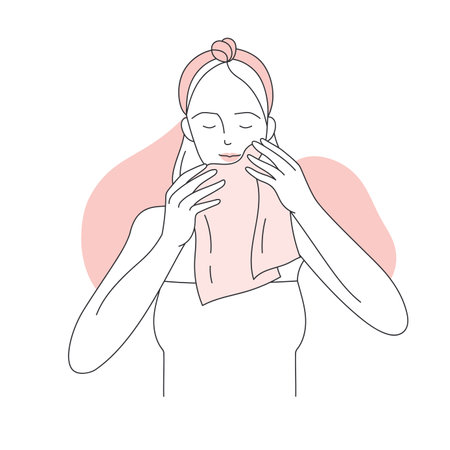1. Understanding the Differences: Wipes vs. Washcloths
When it comes to keeping your baby clean, parents often choose between baby wipes and washcloths. Both options have their own advantages, depending on factors like material, usage, and convenience. Let’s explore the key differences to help you decide what works best for your little one.
Material
Baby wipes are typically made from soft, disposable materials infused with gentle cleansing solutions. Some wipes contain added moisturizers or soothing ingredients like aloe and chamomile to protect your baby’s skin.
Washcloths, on the other hand, are reusable and made from fabrics like cotton, bamboo, or microfiber. These materials are soft and durable, making them a great eco-friendly alternative.
Usage
Wipes are convenient for quick diaper changes, cleaning sticky hands, or wiping faces on the go. They are pre-moistened and ready to use anytime, anywhere.
Washcloths require water and sometimes mild soap for cleaning. They work well for bath time and thorough clean-ups but may not be as practical when youre away from home.
Convenience
| Feature | Baby Wipes | Washcloths |
|---|---|---|
| Portability | Highly portable; great for travel | Less convenient to carry around |
| Reusability | Disposable; single-use | Reusable; requires washing |
| Sensitivity | May contain chemicals or fragrances | Hypoallergenic if using plain water |
| Eco-Friendliness | Creates waste; not biodegradable (unless specified) | More sustainable; can be used multiple times |
Which One Should You Choose?
If you prioritize convenience and quick clean-ups, baby wipes might be your go-to option. However, if you prefer a more natural and sustainable approach, washcloths could be a better fit. Many parents find that a combination of both works best—wipes for on-the-go situations and washcloths for home use.
2. Skin Sensitivity and Hygiene Considerations
Your baby’s skin is incredibly delicate, and choosing the right cleaning method can make a big difference in preventing irritation and discomfort. Both wipes and washcloths have their own impact on skin sensitivity and hygiene, so let’s take a closer look at how they compare.
Potential Allergens and Fragrances
Many baby wipes contain fragrances, preservatives, and other ingredients that could trigger allergic reactions or skin irritation. Some babies have sensitive skin that reacts to these additives, causing redness, rashes, or dryness. If you choose wipes, it’s best to opt for fragrance-free and hypoallergenic options.
Washcloths, on the other hand, are typically free from chemicals when used with just warm water. However, if detergents or fabric softeners with strong fragrances are used to clean them, they might also cause irritation. Choosing a gentle, fragrance-free detergent for washing baby washcloths can help reduce this risk.
Hygiene Factors
Keeping your baby clean is essential for preventing infections and diaper rash. Hygiene plays a key role when deciding between wipes and washcloths:
| Factor | Wipes | Washcloths |
|---|---|---|
| Bacteria Buildup | Single-use reduces contamination risk | If not washed properly, bacteria can linger |
| Chemical Exposure | May contain preservatives and fragrances | No chemicals if used with plain water |
| Irritation Risk | Possible reaction to ingredients | Mild if washed with baby-safe detergent |
The Best Choice for Sensitive Skin
If your baby has extra-sensitive skin or conditions like eczema, using soft cotton washcloths with warm water may be the gentlest option. However, if you need convenience while ensuring minimal irritation, choosing high-quality, fragrance-free wipes is a great alternative.

3. Environmental and Cost Impact
When deciding between disposable wipes and reusable washcloths, its important to consider both their environmental impact and long-term cost-effectiveness. While disposable wipes offer convenience, they generate significant waste and recurring expenses. On the other hand, washcloths require an upfront investment but can be reused countless times, making them a more sustainable choice.
Environmental Impact
Disposable wipes contribute to landfill waste and often contain synthetic materials that take years to break down. Some wipes also contain chemicals that may not be biodegradable, further impacting the environment. Washcloths, however, can be washed and reused, significantly reducing waste production.
Comparison of Waste Generation
| Option | Waste Production | Eco-Friendliness |
|---|---|---|
| Disposable Wipes | High (single-use, non-biodegradable options) | Low (unless using biodegradable alternatives) |
| Reusable Washcloths | Low (minimal waste with proper care) | High (reduces landfill waste) |
Cost Considerations
The cost of disposable wipes adds up over time since they must be repurchased regularly. In contrast, investing in a set of quality washcloths can save money in the long run, as they only require washing rather than continuous replacement.
Cost Comparison Over Time
| Option | Initial Cost | Long-Term Cost | Savings Potential |
|---|---|---|---|
| Disposable Wipes | $10–$30 per pack (monthly expense) | $120–$360 per year (or more) | Low (constant repurchasing needed) |
| Reusable Washcloths | $15–$40 for a set of 10–20 cloths | $0–$20 per year (laundry costs) | High (one-time purchase lasts years) |
The Better Choice for Sustainability and Savings
If you’re looking for an eco-friendly and cost-effective option, reusable washcloths are the better choice. They reduce waste, minimize long-term expenses, and provide a sustainable way to care for your baby’s skin without contributing to landfill buildup. While disposable wipes may still have their place for travel or emergencies, switching to washcloths for daily use is a small change that can make a big difference for both your wallet and the planet.
4. When to Use Wipes and When to Use Washcloths
Both baby wipes and washcloths have their place in your daily routine, but knowing when to use each can make caring for your little one easier and more effective. Below are some common situations where one option may be better than the other.
Diaper Changes
Baby wipes are the go-to choice for diaper changes because they are convenient, disposable, and designed to clean up messes quickly. They come in handy, especially when you’re on the go or dealing with a particularly messy diaper. However, if your baby has sensitive skin or is experiencing diaper rash, a soft, damp washcloth with warm water might be gentler and help reduce irritation.
Mealtime Cleanups
After meals, babies often have food on their hands, face, and even in their hair! While wipes can work in a pinch, a wet washcloth is usually the better option since it effectively removes food residue without leaving behind any chemicals or fragrances. Washcloths also allow for a thorough cleaning while being gentle on delicate skin.
Bath Time
Washcloths are essential during bath time. They help gently scrub away dirt and keep your baby clean without being too harsh on their skin. Unlike wipes, which are designed for quick cleanups, washcloths work best when used with warm water and baby soap to cleanse your baby’s entire body.
Comparing Wipes and Washcloths by Situation
| Situation | Best Option | Why? |
|---|---|---|
| Diaper Changes | Wipes | Convenient and effective for cleaning messes quickly. |
| Sensitive Skin/Diaper Rash | Washcloths | Gentler on irritated skin; reduces exposure to chemicals. |
| Mealtime Cleanup | Washcloths | Removes food residue thoroughly without added ingredients. |
| Bath Time | Washcloths | Best for full-body cleansing with warm water and soap. |
| On-the-Go Cleaning | Wipes | Portable and disposable for quick cleanups anywhere. |
Final Thoughts on Choosing Between Wipes and Washcloths
The decision between wipes and washcloths depends on the situation and your baby’s specific needs. Keeping both options available ensures you always have the right tool for the job—whether it’s a quick cleanup or a gentle wash after mealtime or bath time.
5. Making the Best Choice for Your Baby
When it comes to keeping your baby clean and comfortable, both wipes and washcloths have their place. The best choice depends on your lifestyle, your baby’s skin sensitivity, and how you prioritize convenience versus sustainability.
Key Considerations
To help you decide between wipes and washcloths, consider these important factors:
| Factor | Baby Wipes | Washcloths |
|---|---|---|
| Sensitivity | Hypoallergenic options available but may contain chemicals. | Gentle on skin, especially with warm water. |
| Convenience | Easier for travel and quick cleanups. | Requires washing and drying after each use. |
| Sustainability | Can create waste unless using biodegradable options. | Reusable, making them more eco-friendly. |
| Cost | An ongoing expense as they need to be repurchased. | A one-time investment that lasts longer. |
Lifestyle-Based Recommendations
If You’re Always On the Go
If you’re a busy parent who’s always out and about, disposable wipes are likely the better option. They’re easy to pack in a diaper bag and provide a quick solution for diaper changes, messy hands, and spills.
If Your Baby Has Sensitive Skin
If your baby is prone to rashes or skin irritation, soft washcloths with warm water may be the gentlest choice. You can also look for fragrance-free and hypoallergenic wipes if you need a convenient option.
If You Want an Eco-Friendly Option
If reducing waste is important to you, reusable washcloths are the way to go. Some parents opt for biodegradable wipes when they need something disposable but more environmentally friendly.
If You Prefer a Balanced Approach
You don’t have to choose just one! Many parents use both—washcloths at home for regular cleaning and wipes when they’re out running errands or traveling.
No matter which option you choose, the most important thing is keeping your baby comfortable and clean. Try out both methods and see what works best for your family!


